
The Supra’s legacy of being a high-performance race-ready sports car remains to this day. Ever since the current-gen GR Supra was released, a lot of aftermarket parts have been made to up the fun factor. Of course, Toyota wouldn’t sit on its laurels and its in-house performance brand, Gazoo Racing, one-upped everyone else by making the beast that is the GR Supra GT4.
What was once street-legal can no longer be a daily drive as the Supra GT4 is made for one purpose: track racing. In the GT4 circuit. While the canvas remains the same, a lot of things have been changed inside and out to squeeze every bit of racing potential out of the GT4, and we’re going to look at that today in a way that Toyota would like to show us their principles in “car-making”.
Street Illegal: The Toyota GR Supra GT4
Table of Contents
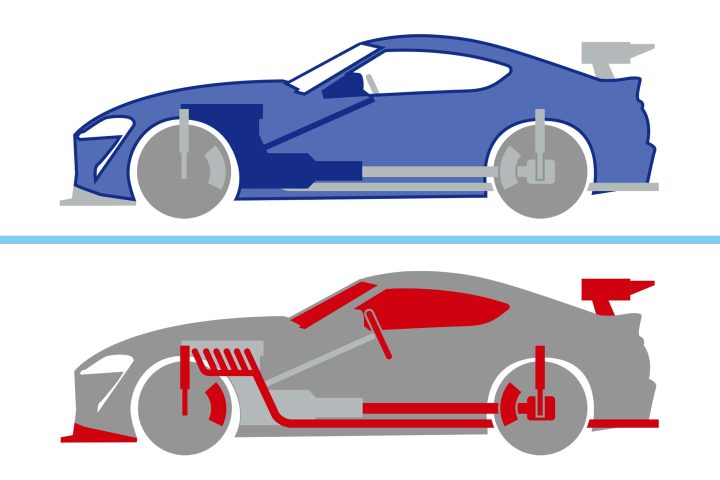
Photo: Toyota
From the time it began development, the GR Supra was designed and engineered with one thing in mind: to be capable enough to compete on a race circuit. GT4 was meant to be its playground, and that said, there was a criterion to meet; the Supra’s GT4 version must share the same basic parts as the production car that it is based on. Quite limited, then, right? No, not really. A lot of work was put into the GR Supra GT4, so let’s have a look at all of them.
Exterior Changes
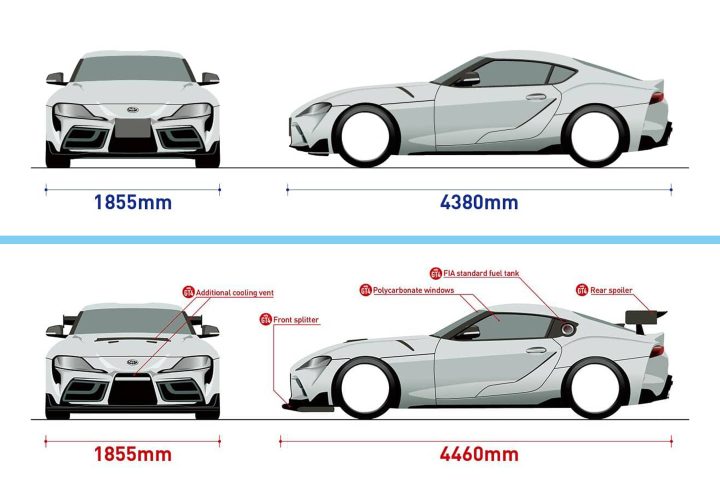
Photo: Toyota
Per the rulebook, a GT4 race car “must retain the same body form in both shape and size as its base production model. Inherently, the GR Supra was already made to be as aerodynamic as it can be, but with a few added (and subtracted) bits, it was easily pushed into GT4 racing territory.
First off are the body kits and panels. The hood and front bumper get additional cooling vents to keep temperatures as close to ideal during hard racing. To keep it planted on the tarmac, a front splitter, as well as a rear spoiler, were added for good measure. These pieces contribute to the longer dimensions of the Supra GT4, but aerodynamics is a big make-or-break factor in any form of motor racing, so these are a welcome addition.
Further changes include the normal glass windows being replaced by polycarbonate, as well as the normal fuel tank being ditched for an FIA-standard fuel tank.
Suspension and brakes
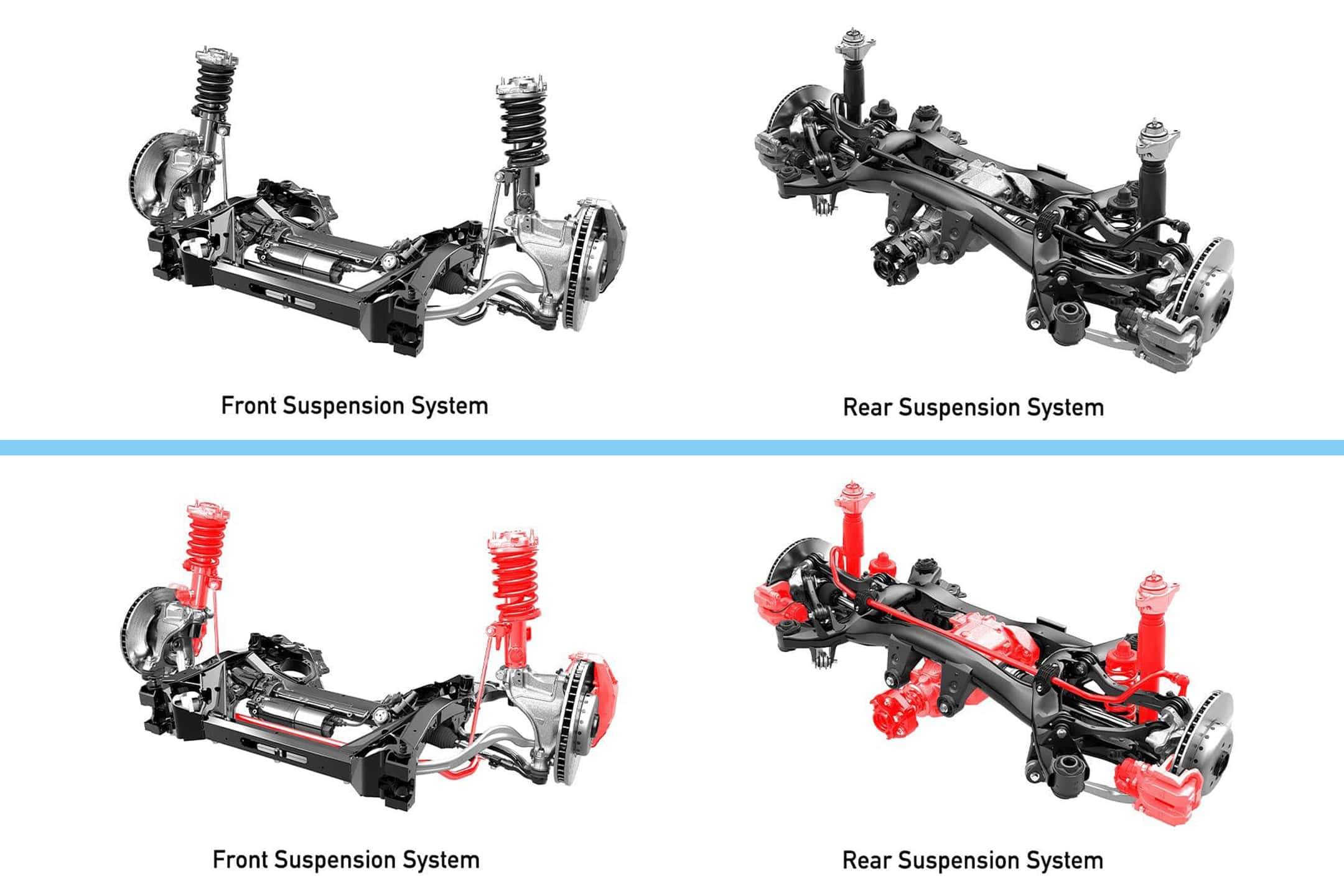
Photo: Toyota
Anyone who’s into racing knows that these are the first and easiest parts to change before taking to the track. Again, the format and geometry of the shock absorbers and springs are the same as in the production model, but the GR Supra GT4 needs adjustable settings for both height and damping. Hence, coil overs were swapped in that do both.
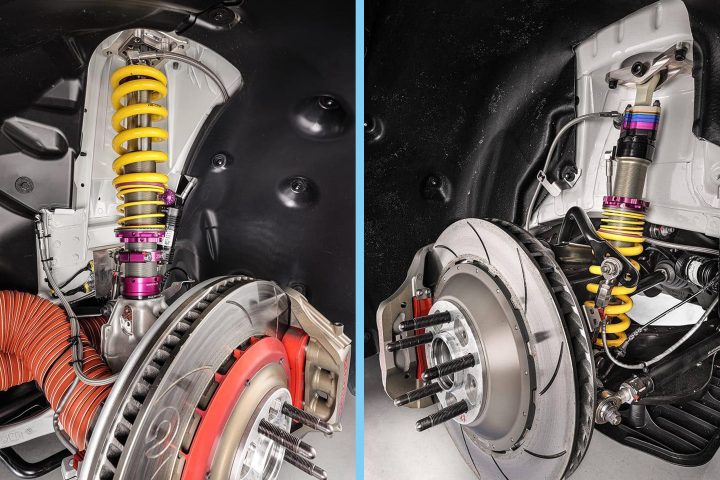
Photo: Toyota
To add to its trackability, the suspension bushings were changed from rubber pieces to pillow balls, and the braking force has likewise been raised to a race-specific level. What’s all that speed for if you can’t stop yourself from ramming into a wall, right?
Engine
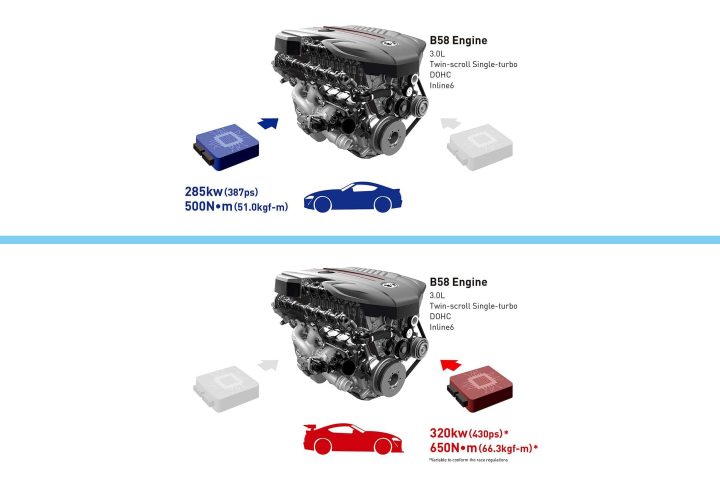
Photo: Toyota
The GR Supra GT4 has the same engine as the production model Supra. Completely stock, the 3.0-liter in-line 6 DOHC twin-scroll turbocharged B58 engine already puts out about 382 HP and 500 Nm of torque, already very potent on a street car. A simple reprogramming of the ECU gives it even more on tap.
It must be said that the B58 is known for its reliability and ability to handle harsh acceleration and that’s pushed to the limit with 424 HP and 650 Nm of pull. The stock ECU throttles all this power and torque in the production model, but again, since racing was top-of-mind since its development, these numbers were just lying dormant all this time.
Transmission
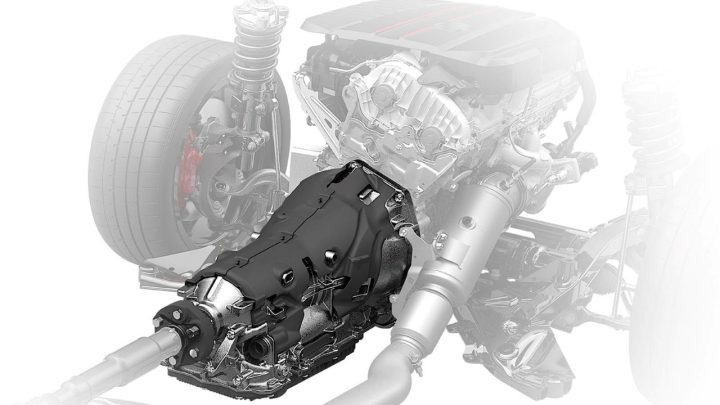
Photo: Toyota
Now that we know that all that power has been unleashed with a “flip of a switch”, it needs to go down to the drive shaft, and that’s courtesy of the transmission.
We can’t emphasize (and repeat) enough how the GR Supra GT4 shares all the same parts as the normal GR Supra. The stock transmission can easily manage the delivery of all that power. A major change, though is that GT4 only allows for 7 gears. The stock unit has 8, but with yet another software control, plus a simple hardware modification, the GT4 meets the required number of gears.
Hardware change being mentioned, the drive shaft of the GR Supra GT4 was changed to a stronger race-specific type, and a mechanical limited-slip differential (LSD) was added to boot. Yes, these are enough to enable the transmission to handle the added power and torque from the engine.
Exhaust

Photo: Toyota
Running with all that power and for that long a time, the engine needs to breathe. To attain a high power output and withstand the higher temperatures, race-specific parts were fitted into the GR Supra GT4’s exhaust system.

Photo: Toyota
What was once a two-exhaust pipe design on the production model, the GT4 has a lone outlet. Lighter and stronger materials are used in the production of the race pieces, and they help evacuate gases and retain the glorious Supra sound with ease. If amateur circuit racing is already music to your ears, then GT4 racing will be a full darned orchestra.
Interior
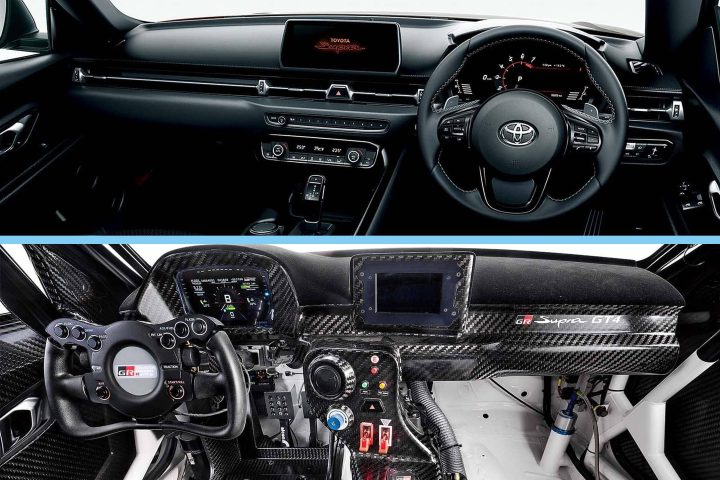
Photo: Toyota
This is where all the changes are, well, evident. Weight reduction is golden in the world of racing, and as such, the interior of the production model GR Supra is stripped and gutted before it can take on GT4 racing duties.
In the interest of shedding pounds and providing increased fire resistance, all panels, passenger and rear seats, and even the carpet have been removed. For safety, a roll cage has been built into the Supra GT4.
But here’s the surprising part. The steering wheel shaft remains the same (the wheel itself has been changed with a race-spec unit with appropriate toggles, of course), so the wheel still has its tilt-telescopic adjustment, as well as power steering. For the latter, a race-specific control unit is swapped in place of the stock one. Even more impressive and curious at the same time is the fact that air conditioning is retained in the GR Supra GT4. Ironic after we talked about weight reduction, but hey, maybe Toyota just wants race drivers to be comfortable. And fast.
–

Photo: Toyota
And there we have it, that’s how Toyota has made the already-good GR Supra into an even better and monstrous track beast that is the GR Supra GT4.
It all sounds easy enough, but at this point, we need to remind everybody of the fact that Toyota knew what direction they wanted the GR Supra to take. From inception, conceptualization, development, and through its existence, what they came out with is a sleeping beast that when woken is ready to tear up the track with wanton and dare we say it “reckless” abandon.
If Lance saw this instead of an Eclipse, he’d probably have said something that equates to more than just “It’s an amazing machine”. Oops, that movie was all drag racing.
But regardless, he wouldn’t have been wrong. Not at all. Not in the least.


